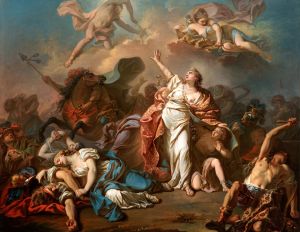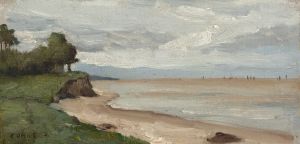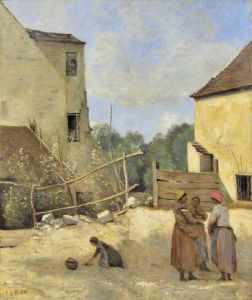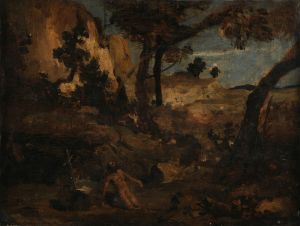
Diana and Actaeon
A hand-painted replica of Jean-Baptiste-Camille Corot’s masterpiece Diana and Actaeon, meticulously crafted by professional artists to capture the true essence of the original. Each piece is created with museum-quality canvas and rare mineral pigments, carefully painted by experienced artists with delicate brushstrokes and rich, layered colors to perfectly recreate the texture of the original artwork. Unlike machine-printed reproductions, this hand-painted version brings the painting to life, infused with the artist’s emotions and skill in every stroke. Whether for personal collection or home decoration, it instantly elevates the artistic atmosphere of any space.
Jean-Baptiste-Camille Corot was a prominent French landscape painter and a pivotal figure in the transition from traditional Neoclassical painting to the innovations of Impressionism. Among his extensive body of work, Corot occasionally explored mythological themes, one of which is depicted in his painting "Diana and Actaeon." This painting reflects Corot's interest in classical mythology, a subject that was popular among artists of his time.
"Diana and Actaeon" is based on a story from Ovid's "Metamorphoses," a Latin narrative poem that has been a rich source of inspiration for artists throughout history. The myth tells the tale of Actaeon, a young hunter who accidentally stumbles upon the goddess Diana bathing with her nymphs. As punishment for seeing her in her divine nudity, Diana transforms Actaeon into a stag, and he is subsequently hunted down and killed by his own hounds.
Corot's interpretation of this mythological scene is characteristic of his style, which often blends elements of realism with a poetic, atmospheric quality. His landscapes are known for their soft, diffused light and tranquil mood, and "Diana and Actaeon" is no exception. The painting captures the moment of discovery, with Diana and her nymphs surprised by Actaeon's intrusion. Corot's use of light and shadow creates a sense of depth and mystery, drawing the viewer into the scene.
The composition of "Diana and Actaeon" reflects Corot's mastery of landscape painting. The figures are integrated into a lush, verdant setting, typical of Corot's work, where nature plays a central role. The trees and foliage are rendered with a delicate touch, and the overall palette is subdued, with earthy tones that enhance the serene yet tense atmosphere of the narrative.
Corot's approach to mythological subjects is often more subdued and introspective compared to the dramatic interpretations of his contemporaries. Rather than focusing on the violent or dramatic aspects of the myth, Corot emphasizes the tranquility of the natural setting and the quiet tension of the moment before Actaeon's tragic fate unfolds. This reflects Corot's broader artistic philosophy, which prioritized mood and emotion over strict adherence to narrative detail.
"Diana and Actaeon" is an example of Corot's ability to infuse classical themes with a sense of modernity, bridging the gap between the academic traditions of the past and the emerging movements of the 19th century. While Corot is primarily celebrated for his landscapes, his mythological paintings, though less numerous, reveal his versatility and depth as an artist.
The painting is part of Corot's broader oeuvre, which has been influential in shaping the development of landscape painting in France. His work laid the groundwork for the Impressionists, who admired his ability to capture the fleeting effects of light and atmosphere. Although "Diana and Actaeon" may not be as widely recognized as some of his other works, it remains a testament to Corot's skill in blending narrative and landscape, creating a harmonious and evocative scene that continues to captivate viewers.
In summary, Jean-Baptiste-Camille Corot's "Diana and Actaeon" is a notable example of his exploration of mythological themes within the context of his landscape painting. Through his subtle use of light and composition, Corot offers a unique interpretation of a classical story, highlighting his contribution to the evolution of 19th-century art.











